When it comes to growing marijuana, grow lights are very important. However, while choosing the light that you would need to grow your plant seems like a rather simple concept on paper, it is actually quite a complex procedure which would require growers to do an extensive amount of research as there are multiple options and different types of grow lights. Growers need to understand that there are two broad ways in which you can grow your marijuana plants – indoors and outdoors. While growing your weed outdoors won’t really require too much of an effort, it isn’t always dependable because the factors that influence growth are not in your control – light being one of them.
In this article, we will take a closer look at grow lights – and more specifically, high-pressure sodium grow lights vs LED grow lights. Here, we will try and understand what each of these lights actually provide the users with and what the differences between the two are. Since we will be talking about High Pressure Sodium (HPS) lights, we will also be talking about Metal Halides, which are a counterpart to it. Here’s a closer look at what grow lights are, what each of the aforementioned different types of lights are, and what are the differences between them.
What are Grow Lights? Why Do You Need Them?
When you grow your marijuana plants indoors, you would require a source of light and heat – which is the most important for the growth of your plants. This is because the cannabis plant grows in the direction of the light and also requires the light and the heat for processes such as photosynthesis to properly take place. Moreover, it also helps in the generation of pigments like chlorophyll which are really important for the plant’s growth cycle. It is also based on the heat and the humidity that the plant respires and basically, when you grow your plants indoors, the grow lights are acting as a replacement for the sun!
Hence, grow lights are very important. When you grow your plant outdoors, you cannot really control the amount of light and heat it gets. If the weather is cloudy, the supply would be cut off and if the weather gets too hot, the plants get damaged. However, in an indoor setup, you can use grow lights and turn them on and off, as well as increase or decrease their distance from the plants so that you can actually provide an optimal growth condition to your cannabis plants.
There are many types of grow lights out there, but for the purpose of this article we shall focus only on High-Intensity Discharge (HID) grow lights – which comprises of High Pressure Sodium grow lights (HPS lights) and Metal Halides, as well as LED Grow Lights. Here’s a closer look at each of them:
What are High-Pressure Sodium Grow Lights?
High Pressure Sodium (HPS) Grow Lights are basically a part of the HID Grow Lights system which consists of lights of two spectrums. The High Pressure Sodium Grow Lights provide the warm spectrum (reddish and orangish lights). The lamp in these grow lights makes use of vaporized sodium metal. An electric arc is created in these lights when electricity is passed through it – causing the light to glow.
In these kinds of grow lights, you have an arc tube – which usually consists of aluminum oxide and the sodium metal. However, there is also the presence of other chemicals and metals such as mercury which sort of balance out the excessive warm lights by providing a somewhat bluer shade. These lights are usually omnidirectional – basically providing light only towards one direction, causing a lot of light to go waste. Their color spectrum is usually very narrow and you can see them being used as street lights apart from being used as grow lights. Due to the kind of light that these lamps emit, the High Pressure Sodium grow lights are good for plants once they reach the flowering stage of growth.
What are Metal Halides?
Metal Halides are the other end of the spectrum when it comes to High Intensity Discharge (HID) Grow Lights. In many ways, they are the exact opposite of what High Pressure Sodium grow lights have to offer. As opposed to the HPS lights, Metal Halides are actually the cooler spectrum of light and provide a white tint (on the bluer spectrum). These lights, again opposite to the HPS lights, are great for your plant when it is in the vegetative stage of growth.
Metal Halide lamps provide light to the plants by passing an electric current through a mixture of mercury and metal halide gases. These metal halide lamps contain more mercury (more than twice) compared to HPS lamps on an average.
What are LED Grow Lights?
LED grow lights are quickly growing in popularity and are already being hailed as the future of agriculture. A number of indoor growers, and particularly those who prefer growing marijuana have been using these kinds of grow lights of late. These are energy-efficient lights and offer the users with spectrum-specific kinds of lights or even full-spectrum lights depending on the need of the grower.
LED stands for Light Emitting Diodes and these grow lights make use of LED chips, which consist of LEDs made out of two different kinds of semiconductors, one featuring a negative charge (electrons) and the other featuring a positive charge (holes). When current is passed through these diodes, the positive and the negative charges begin to collide and release photons which result in the generation of light. LED grow lights can offer you lights in the visible, infrared as well as ultraviolet spectrums.
Difference between High Pressure Sodium Grow Lights vs LED Grow Lights
Now that you know what these lights are, here’s a closer look at the differences between High Pressure Sodium Grow Lights vs LED Grow Lights:
- Colour Temperature: The colour spectrum that the HPS Grow Lights offer is very narrow and limited. They are limited to the deeper, warmer shades of lights and the colour temperature usually ranges between 2200K to 2500K. On the other hand, LED Grow Lights offer a much larger range when it comes to colour temperature and spectrum as they offer a spectrum ranging from ‘warm’ to ‘daylight’ ranging from 2200K to 6000K.
- Lifetime: Lifetime basically refers to how long these lights can last for. This is an important thing to consider, especially for those growers who want to grow long-term. It must be known that High Pressure Sodium Grow Lights offer a lifetime of about 14,000 to 20,000 hours at the most. When compared to this, LED Grow Lights actually have a lifetime that averages about 40,000 hours to 50,000 hours depending on the usage!
- Startup Time: Startup time is a concept that is practically unknown to those using LED Grow Lights because they light up instantly and hit peak intensity as soon as you switch them on. However, when it comes to High Pressure Sodium Grow Lights vs LED Grow Lights, the HPS grow lights lose out quite a bit here as they take a long time to warm up and glow at its full intensity. On an average these lights take about 15-20 minutes to glow properly.
- Safety: LED grow lights again score a point here when it comes to High Pressure Sodium Grow Lights vs LED Grow Lights. HPS Lights contain chemicals such as sodium vapour and mercury inside them which are harmful as well as hard to dispose. In case the lights break, there’s a lot of hassle when it comes to disposing them off. LED lights do not pose any such risk.
- Direction of Light: The nature of the bulb of High Pressure Sodium grow lights is quite unidirectional which is one of the biggest drawbacks of these lights as a lot of light is lost when you use these lamps. About 15% of HPS lamps’s heat is also lost due to this. However, LED grow light panels provide a much greater light coverage due to the possibility of a 180-degree configuration.
- Plant Growth Cycle: High Pressure Sodium grow lights are useful only during the flowering stage of the plant’s growth cycle and you need to use metal halides during the vegetative growth. However, LED lights do not require you to change the lighting system for different phases of growth as full-spectrum LED lights come with a switch which can help you switch between vegetative to flowering at just a simple tap of your finger!
- Energy Efficiency: Perhaps the most important feature of them all so far – when it comes to High Pressure Sodium grow lights vs LED grow lights, the latter scores a huge win here as it is much more energy efficient – they can provide the same amount of light as an HPS lamp of a higher wattage but will have a lesser electricity consumption.
- Durability: High Pressure Sodium lights are considerably brittle when you compare them with LED lights, which are very sturdy and can deal a great deal of physical shock.
- Price: High Pressure Sodium lights are cheaper than LED Grow Lights – but all good things come with a price!
Conclusion: Which Grow Lights Should You Buy?
The comparison above between High Pressure Sodium grow lights vs LED grow lights clearly indicates that the LED grow lights have a significant advantage when compared to HPS lights. The biggest being that of energy efficiency as the lights really consume very little electricity – and in the long-run pay off for themselves. There’s practically no aspect (other than price) that High Pressure Sodium lights have performed better in. Hence, LED grow lights are indeed the right choice for anyone looking forward to growing marijuana indoors.
Table of Contents


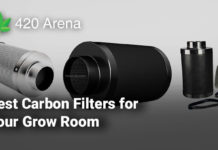
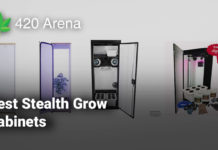
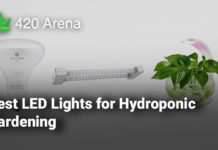

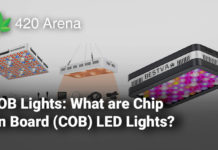


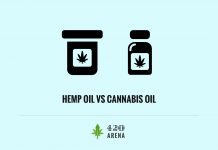


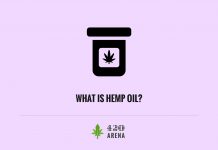
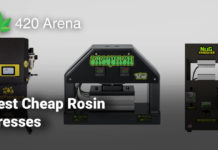
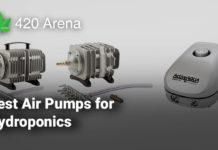
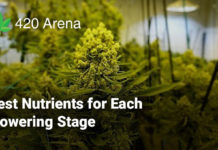
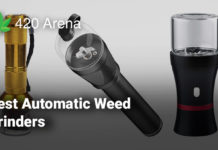
![How to Use Carbon Filters in Your Grow Room [7 Best Carbon Filters for Grow Rooms in 2021] How to Use Carbon Filters in Your Grow Room](https://420arena.com/wp-content/uploads/2020/12/How-to-Use-Carbon-Filters-in-Your-Grow-Room-218x150.jpg)





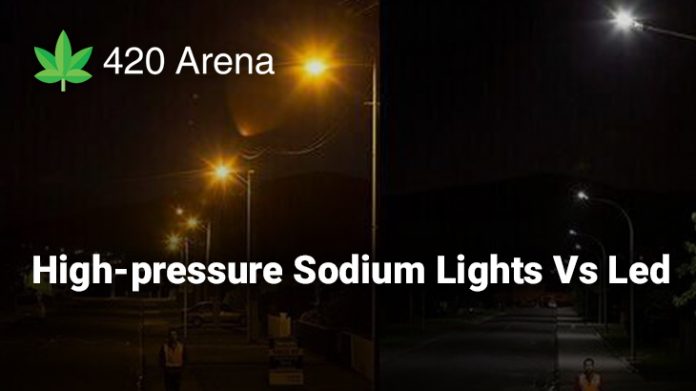





[…] you are looking for a good replacement for your old HPS grow light then you have come to the right place because here we are going to discuss how the Bestva 2000W LED […]